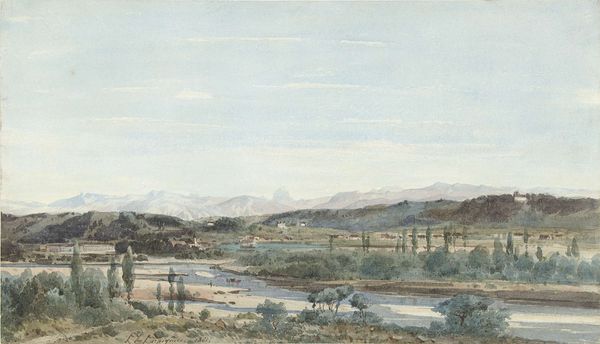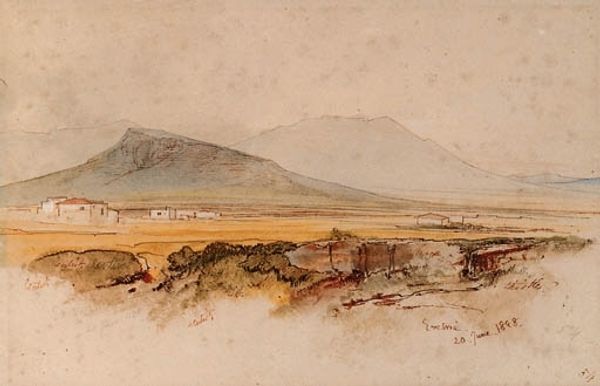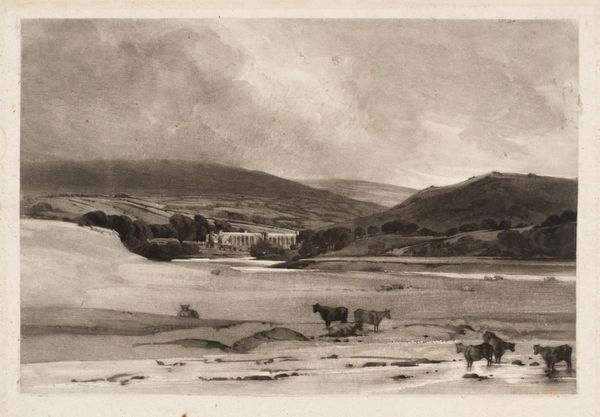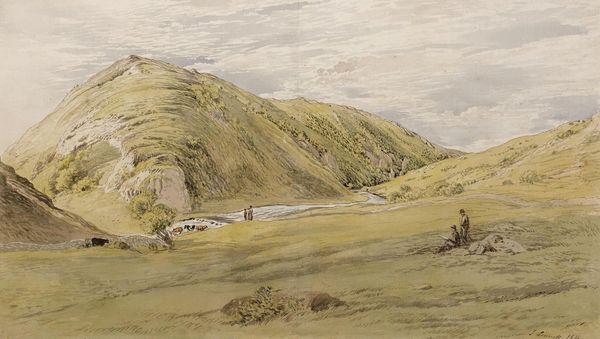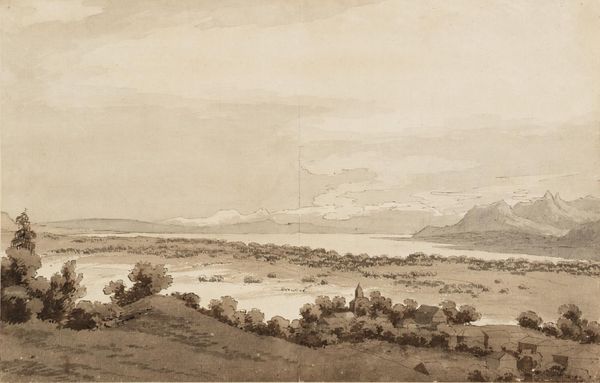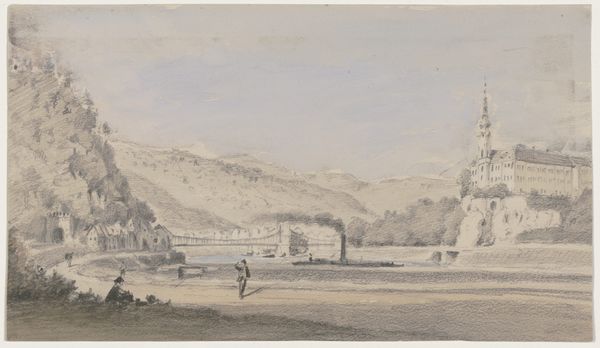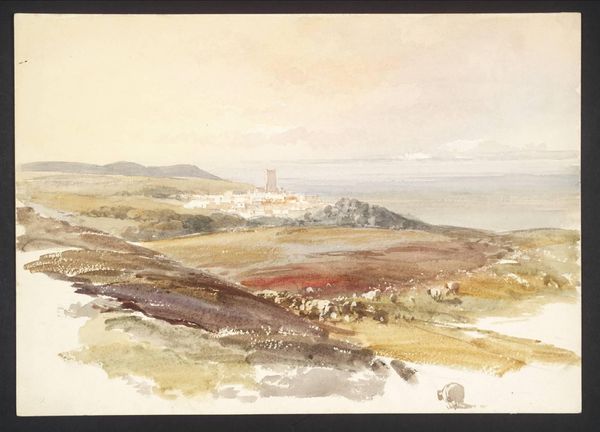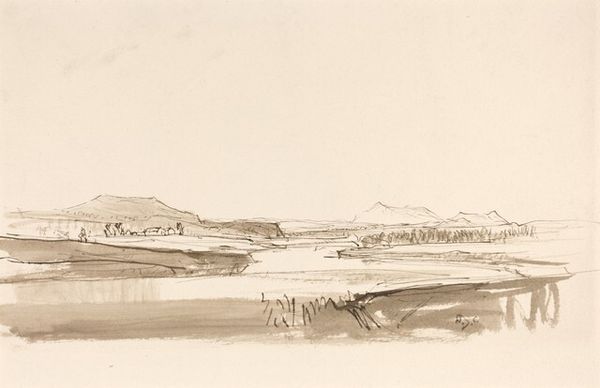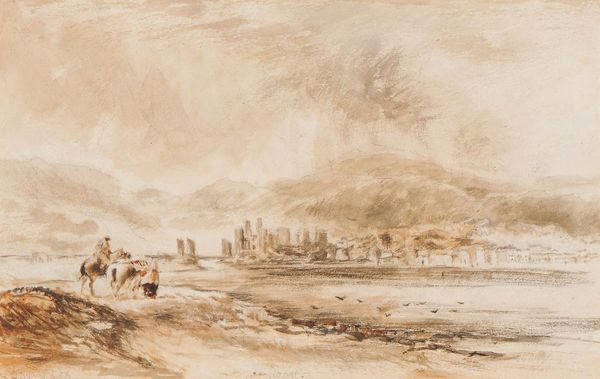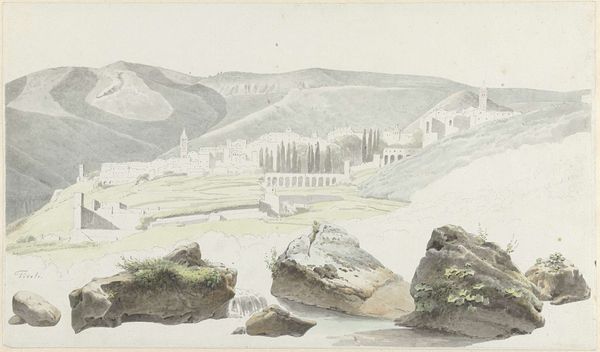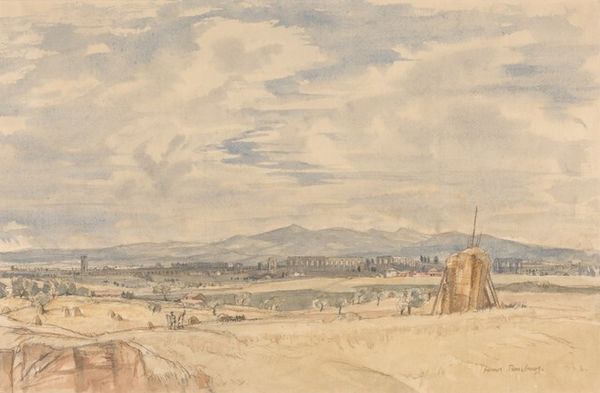
plein-air, watercolor
#
plein-air
#
landscape
#
oil painting
#
watercolor
#
classicism
#
ancient-mediterranean
#
cityscape
#
watercolor
#
realism
Copyright: Public domain
Editor: Right, so this is "View of Athens" by Charles Gleyre, a watercolor that seemingly captures the city and landscape surrounding it. It feels...almost desolate, a muted palette dominates the canvas. How do you interpret this work, especially considering Gleyre's place in art history? Curator: Desolate is a powerful word. Consider that this image reflects a specific European gaze on Greece during a period of intense cultural and political engagement. It's not just a landscape; it's a visual statement laden with the weight of orientalism and colonialism. How does the Parthenon, framed almost as a ruin in the background, speak to the relationship between the "ancient" and the "modern," or rather, the contemporary view of this site? Editor: It’s as if it's presenting a past glory in decay. Almost as a warning of what the future might look like? Curator: Exactly. Think about how 19th-century European artists often used classical imagery to comment on contemporary social issues. Gleyre is positioning Athens, and by extension, Greece, within a larger narrative of decline and the need for "enlightened" intervention. Do you see any other elements that support this interpretation? Editor: I suppose the figure riding the animal in the foreground contributes. There’s a feeling of this space not being 'ours' in the way a Western viewer would like it to be, if that makes sense? It adds an "otherness" to the composition. Curator: Precisely. The figures are racialized and exoticized elements within this Western construction of the East, and reinforce notions of difference and dominance that were rampant at the time. These are the critical dialogues we must encourage when considering the aesthetic qualities of a watercolor piece like this. Editor: That's really changed how I see it. It's not just a pretty view. There's so much more layered into the imagery and its construction. Curator: And recognizing those layers allows us to critically engage with the history and ongoing politics embedded within artistic representation.
Comments
No comments
Be the first to comment and join the conversation on the ultimate creative platform.
